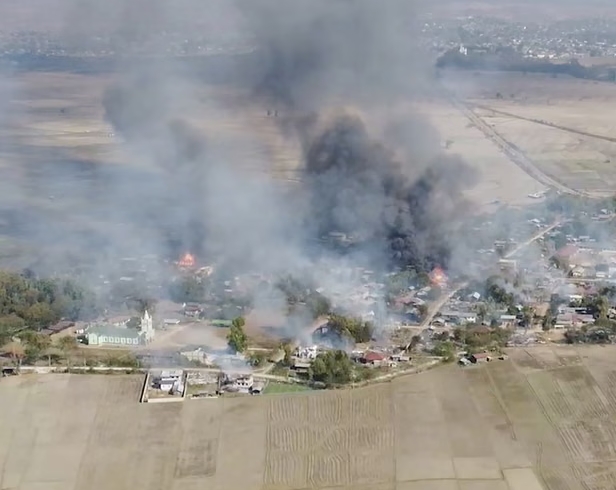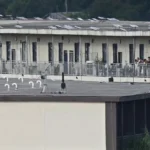
Myanmar Junta Using European Tech in Drone Strikes, Report Reveals
The Myanmar military is deploying European-made anti-jamming technology to shield its drone fleet as it carries out aerial assaults, according to a new investigation, prompting renewed calls for stricter international sanctions.
A report by Conflict Armament Research (CAR) found that the junta obtained the advanced navigation systems — designed to protect drones from jamming and signal spoofing — through a Chinese distributor. The equipment was found in downed military drones in Kayah state, and similar components have also been detected in Chin state, both areas that have seen intense fighting.
CAR researchers said there is evidence the military is attempting to weaponize the drones, fitting them with release mechanisms to drop explosives.
Myanmar’s armed forces, widely condemned for targeting civilians, have ramped up drone use in the face of a growing resistance movement. Since the 2021 coup, opposition forces — including ethnic armed groups and pro-democracy fighters — have taken control of significant border regions. In the past year, the junta has invested heavily in drone warfare to counter their effectiveness.
According to data from the Armed Conflict Location & Event Data Project (ACLED), Myanmar now ranks third globally for drone-related conflict events, behind only Ukraine and Russia.
Despite a long-standing EU arms embargo, first introduced in the 1990s and expanded in 2018 and again after the 2021 coup, CAR’s findings reveal gaps in enforcement. The anti-jamming technology identified is not classified as military or dual-use equipment and thus falls outside existing export controls.
CAR’s head of research, Robert Hunter Perkins, noted the growing challenge of regulating drone warfare. “Commercial drone technology is evolving rapidly,” he said. “It’s difficult for export regulations to keep pace with the market.”
Though the European manufacturer of the technology was not named, the report states that it shipped the product to a vetted distributor in China in March 2023. That distributor later sold the technology as part of a larger package to another China-based company that integrates components into drones. By March 2024, the systems had been transferred again — this time to a firm based in Ruili, a key trade hub on the China–Myanmar border.
Activists say the discovery fits a broader pattern of continued international transfers of sensitive technologies to the Myanmar military.
Yadanar Maung, spokesperson for Justice For Myanmar, said the findings were no surprise. “We’ve already seen exports of communications gear, spyware, UAV components, aircraft parts, and even propulsion systems for naval vessels,” she said.
“None of these should ever have reached the junta,” Maung added. “Without strict enforcement by EU member states, companies will keep dealing with the junta’s arms brokers with impunity. The EU must also expand sanctions to block the junta’s access to funds, weapons, and aviation fuel, and coordinate closely with allies.”
Thank you for reading! Visit us anytime at Myanmar.com for more insights and updates about Myanmar.
Related posts:
 SpaceX Cuts Starlink Access at Myanmar Scam Compounds
SpaceX Cuts Starlink Access at Myanmar Scam Compounds
 MYANMAR JUNTA CLAIMS UN LABOR RESOLUTION IS DRIVEN BY POLITICAL MOTIVES.
MYANMAR JUNTA CLAIMS UN LABOR RESOLUTION IS DRIVEN BY POLITICAL MOTIVES.
 MYANMAR’S RARE EARTH MAGNET EXPORTS TO CHINA RAISE ENVIRONMENTAL AND HUMAN RIGHTS ALARMS
MYANMAR’S RARE EARTH MAGNET EXPORTS TO CHINA RAISE ENVIRONMENTAL AND HUMAN RIGHTS ALARMS
 Policy Dilemmas and Stability: Bangladesh’s Approach to the Arakan Army
Policy Dilemmas and Stability: Bangladesh’s Approach to the Arakan Army
 PM Modi Meets Myanmar’s Senior General Min Aung Hlaing in Tianj
PM Modi Meets Myanmar’s Senior General Min Aung Hlaing in Tianj
 China Executes 16 Tied to Myanmar Crime Syndicate
China Executes 16 Tied to Myanmar Crime Syndicate
